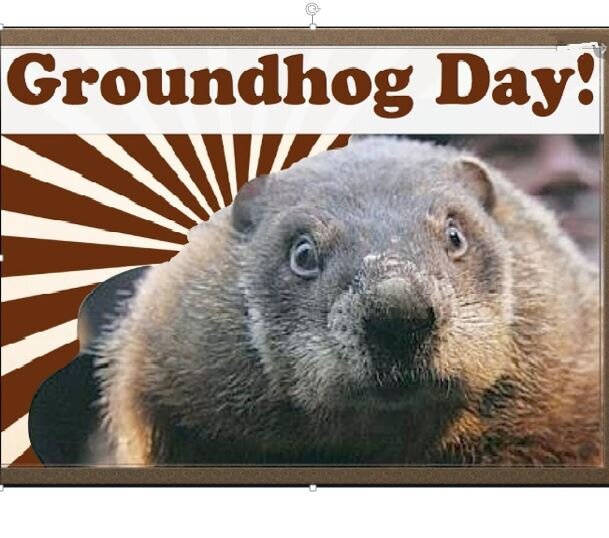
In honor of Groundhogs Day, I thought I would give these unappreciated rodents some recognition. First a reminder of the origins of the tradition of basing winter-ending forecasting around whether or not it sees its shadow:
It stems from the ancient belief that hibernating creatures were able to predict the arrival of springtime by their emergence.
The German immigrants known as Pennsylvania Dutch brought the tradition to America in the 18th century. They had once regarded the badger as the winter-spring barometer. But the job was reassigned to the groundhog after importing their Candlemas traditions to the U.S. Candlemas commemorates the ritual purification of Mary, 40 days after the birth of Jesus.
Candlemas is one of the four “cross-quarters” of the year, occurring half way between the first day of winter and the first day of spring. Traditionally, it was believed that if Candlemas was sunny, the remaining six weeks of winter would be stormy and cold. But if it rained or snowed on Candlemas, the rest of the winter would be mild. If an animal “sees its shadow,” it must be sunny, so more wintry weather is predicted:
If Candlemas be fair and bright, Winter has another flight. If Candlemas brings clouds and rain, Winter will not come again.
The groundhog and badger were not the only animals that have been used to predict spring. Other Europeans used the bear or hedgehog–but in any case the honor belonged to a creature that hibernated. Its emergence symbolized the imminent arrival of spring.
Traditionally, the groundhog is supposed to awaken on February 2, Groundhog Day, and come up out of his burrow. If he sees his shadow, he will return to the burrow for six more weeks of winter. If he doesn’t see his shadow, he remains outside and starts his year, because he knows that spring has arrived early.
But enough of stuffy traditions. Let’s review the Top Ten Perks or Positives of Being a Groundhog:
10) Of course the obvious one is you have a national day named in your honor. This is a distinction only accorded to a precious few – and no other members of the animal kingdom. That alone should provide adequate bragging rights.
9) The fact that you really only work one day of the year (in terms of doing anything that the general public considers remotely productive) and get to rest (even hibernate) is attractive to many.
8) You are not overexposed in the sports marketing realm when it comes to team nicknames … so there probably is some good money waiting out there for whatever team wants to pick up the mantle of the Groundhogs.
7) You also are famous for the tongue twister “How much wood could a woodchuck chuck if a woodchuck could chuck wood.”
6) You excel at two very necessary evasionary tactics: swimming and climbing trees.
5) When you are hibernating, your body temperature might drop to as low as 39-40 degrees F – and yet you never complain to your spouse about how freezing it is or that you are living in a refrigerator.
4) You don’t have to search long for food that you enjoy – you have everything you need within easy picking range: Groundhogs in the wild eat succulent green plants, such as dandelion greens, clover, plantain and grasses.
3) Your fur is not heavily sought after by the expensive coat makers – and you live under the radar in terms of recreational hunting – you just have to avoid being labeled a nuisance and sought after on that account.
2) At an average of 10 pounds and only 2 feet tall, you cannot really hurt yourself by falling.
1) The main perk is that your underground residence has insulated you from the horrendous upsurge in heating and cooling costs.

